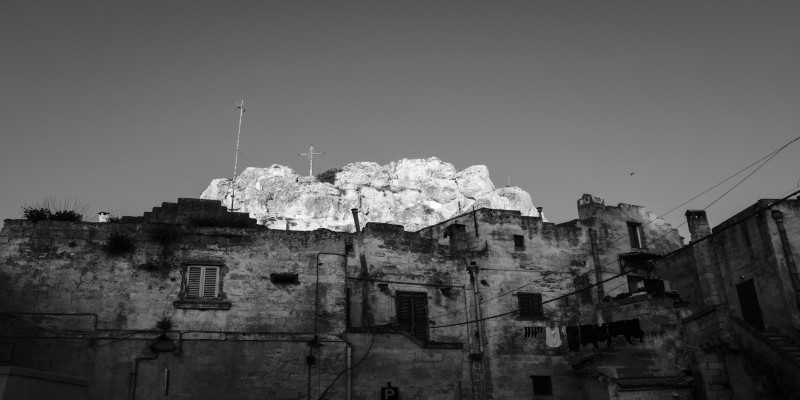
Contra Dancing: Unveiling Its Rich History and Evolving Traditions
Feb 01, 2024 By Frederica
If the rhythmic footwork and joyful twirls of Contra Dance have piqued your curiosity, you're in for a treat. Join us as we delve into this social dance form's lively history and distinctive characteristics.
It's a journey that unveils the rich tapestry of Contra Dance, where each step tells a story, and every twirl connects you to a vibrant tradition of community, music, and shared joy. So, lace up your dancing shoes and come along as we explore the enchanting world of Contra Dance together.
What Is Contra Dance?
Contra Dance, a spirited social dance rooted in centuries-old traditions, is distinguished by its inclusive and community-driven essence. In contrast to the formalities of ballroom dances, Contra Dancing nurtures a sense of togetherness as dancers form facing lines, engaging in a lively exchange of moves guided by a caller.
The spirited atmosphere is heightened by the rhythmic beats of lively folk tunes, directing dancers through a sequence of steps. This unique dance form creates an energetic and welcoming environment with its partner-oriented structure and vibrant music.
Contra Dance is a cherished tradition that resonates with people of all ages and backgrounds, fostering connections through the universal language of music and movement. Its enduring appeal lies in the joyous interplay between dancers, the lively tunes, and the shared experience that transcends generational and cultural boundaries.
A Brief History of Contra Dancing
Contra Dance, with roots reaching back to 17th-century England, emerged as a harmonious fusion of diverse European folk dance styles. Its journey continued as settlers transported their cultural traditions to North America, where Contra Dance found a new home, seamlessly adapting to the continent's rich tapestry of musical influences.
During the 19th century, Contra Dance flourished in rural communities throughout the United States, evolving into a vibrant social hub facilitating meaningful connections. While experiencing fluctuations in popularity over the years, the dance form's enduring resilience remained a testament to its cultural significance.

In the mid-20th century, a dedicated community of enthusiasts sparked the modern Contra Dance revival. Fueled by a deep passion for preserving and celebrating traditional dance forms, this movement breathed new life into Contra Dance.
Today, the rhythmic beats and lively twirls of Contra Dance resonate globally, with events attracting a diverse array of dancers spanning various ages and backgrounds. The enduring appeal of Contra Dance stands as a testament to its timeless charm and its ability to unite people through the universal language of music and movement.
Characteristics of Contra Dance
Discover the defining features that make Contra Dance a beloved social activity:
Community Spirit
Contra Dance is renowned for cultivating an inclusive and welcoming atmosphere, emphasizing forging connections and shared experiences. Whether you've been dancing for years or just starting, Contra Dance brings people together, making everyone feel like they belong, whether it's your first time or you're a seasoned dancer.
Caller-Guided Moves
The caller's pivotal role in Contra Dance is remarkable, guiding dancers through dynamic moves that inject spontaneity and enjoyment into every dance. This unique interaction doesn't just add entertainment but fosters an engaging, collaborative experience for all participants. The caller's cues create a lively atmosphere, where dancers respond enthusiastically, contributing to the vibrant and communal spirit that defines Contra Dance.
Live Music
Contra Dance thrives on the lively beat of live music, with traditional folk instruments like fiddles, banjos, and accordions infusing the atmosphere with infectious energy. This dynamic interplay creates a vital connection, intertwining the vibrant notes of the music with the rhythmic movements of the dancers, making every Contra Dance session a vibrant celebration of music and movement.
Variety in Formations
Contra Dance captivates with its diverse formations, seamlessly transitioning between long lines, circles, and waves. This versatility infuses each session with excitement and encourages dancers to adapt to different configurations, promoting a dynamic and adaptable atmosphere on the dance floor. In the ever-changing landscape of Contra Dance formations, participants discover a delightful mix of patterns that keeps the experience fresh and enjoyable.
Contra Dancing vs. Square Dancing: What’s the Difference?
While Contra Dance and Square Dance share some similarities, they have distinct characteristics that set them apart.

Formation: Contra Dance unfolds in long lines, with partners facing each other in a communal dance setting. On the flip side, Square Dance orchestrates four couples in a square formation, each couple gazing inward, creating a distinct visual arrangement that defines the dance.
Caller Interaction: The dance caller plays a pivotal role in both Contra Dance and Square Dance. However, the dynamics differ; in Contra Dance, the caller engages directly with individual dancers, providing personalized guidance through the sequence of moves. Conversely, Square Dance sees the caller addressing the collective group, providing instructions to all dancers simultaneously.
Complexity of Moves: Contra Dance embraces simplicity and continuity in its movements, with dancers flowing seamlessly along the line. In contrast, Square Dance introduces a more intricate choreography, featuring complex moves executed within the confines of the square formation, demanding a higher degree of precision and coordination from the participating couples.
Understanding these differences adds depth to the appreciation of Contra Dance and Square Dance, highlighting the unique qualities that make each dance form a captivating cultural expression.
Conclusion
As we conclude our journey through the vibrant realm of Contra Dance, it's evident that this lively tradition thrives, fostering unity through the harmonious blend of music and movement. Whether you're a seasoned dancer or contemplating your initial steps onto the dance floor, Contra Dance extends an invitation to a warm and inclusive community, celebrating a shared heritage.
So, don your dancing shoes, step into the line, and immerse yourself in the sheer joy of Contra Dance—an experience that transcends generations, embraces diversity, and encapsulates the spirit of togetherness in every lively step.
-
 Art Jan 31, 2024
Art Jan 31, 2024Learning About Neo-Romanticism – One of the Best Art Forms
Are you curious to know more about the Neo-Romanticism art movement, this article has everything you need to know.
-
 Health Jan 01, 2024
Health Jan 01, 20248 Best Exercises for Hypothyroidism
You can do low-impact exercises like walking, yoga, riding, Tai Chi, and strength training to deal with hypothyroidism
-
 Art Jan 31, 2024
Art Jan 31, 2024The History of Photography: When Was the Camera Invented?
Uncover the history of photography and find out when the camera was invented. Explore its journey from ancient optics to modern digital marvels
-
 Health Jan 02, 2024
Health Jan 02, 2024Best Home Remedies For Gas And Bloating
Certain herbs, walking, yoga, massage, heat, and water intake can relieve the trapped gas instantly and provide quick relief